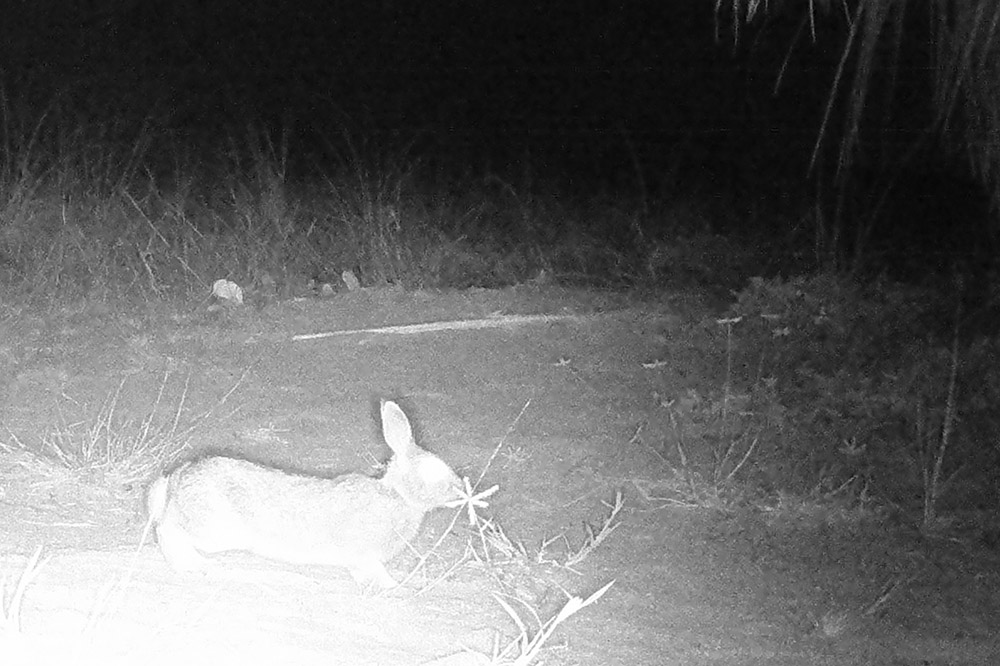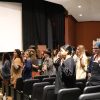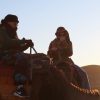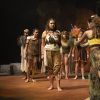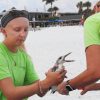An armadillo, a cottontail, a clapper rail, a Virginia opossum and coyotes trigger the motion-activated cameras in Fort De Soto Park. The coyotes at the end of video came to inspect the area marked by the first coyote a few days earlier. Video: Eckerd College/Timothy Bransford & Beth Forys
They never know what they’re going to get. It could be a night heron chasing down a fiddler crab, or a curious coyote that comes sniffing within inches of the lens. But they’re almost always surprised, like opening a present without a hint of what’s inside.
Two Eckerd College professors, with help from three of their students, have set up 10 solar-powered, motion-activated cameras inside Fort De Soto Park, and for the past two months have been documenting what comes into view after everyone goes home. The students collect the images twice a month and are currently categorizing them for public viewing. If a grant they applied for comes through, the team hopes to add 10 more cameras.
Beth Forys, Ph.D., the Richard R. Hallin Professor in Natural Sciences at Eckerd College, and Tim Bransford, Ph.D., assistant professor of animal studies at Eckerd, began the project in September to learn what kind of wildlife lives at Fort De Soto Park, where it goes, what it does and how it can be protected. Park officials, the professors say, were eager to be a part of the project.
The researchers had picked a good spot. The 1,136-acre park is owned by Pinellas County and is made up of five interconnected islands. Fort De Soto is often cited as one of the best beaches in Florida, which helps explain why the park attracts more than 3 million visitors annually. Birds also flock there—more than 328 species have been identified.
And there are more coyotes than anyone suspected.
An armadillo, a raccoon, a juvenile yellow-crowed night heron, a cottontail rabbit and a Virginia opossum are some of the animals that have been photographed by the motion-activated cameras. Photos: Eckerd College/Timothy Bransford & Beth Forys
Bransford, director of Eckerd’s Conservation Behavior Lab and a primatologist, had done a similar project on the island of Borneo. “It’s really cool to be able to do something like that around here,” he says. “Fort De Soto is a lot easier to get to than Borneo, and my wife works there as a park ranger.”
The animals they’ve caught on camera include rabbits, raccoons, opossums, black rats, armadillos, herons, gopher tortoises and … coyotes. “We are really interested in getting an idea about how coyotes live in the park,” Bransford says. “No one had done a biodiversity survey of the land animals on Fort De Soto, so we put the cameras around the islands to see where the animals are living, and also to compare that to things like visitation rates and roadkill data. We look at how animals are feeding near picnic shelters.”
And how their behavior sometimes seems … odd.
“At one of the [camera] locations, the animals were always walking from the right side to the left side of the frame,” adds Forys. “Where are they all going? And the regularity of the raccoons. They showed up at the same time every day.”
Every two weeks, the three Eckerd students check the cameras and retrieve images. The students wear gloves, Forys explains, to keep the scent of humans at a minimum. Aubree Fisher, a senior animal studies and environmental studies student from Orlando, supervises the team and is using the project for her internship.
“Going into the project, I didn’t know what to expect,” she says. “I really wasn’t expecting to see as many animals as we do. Lots of racoons and coyotes. It’s so surprising how well they stay out of human reach during the day.”
Beyond learning animal behavior, the project offers other rewards.
“As someone on the team,” Aubree says, “this gives me hands-on experience outside the classroom. I can apply everything I’ve learned these last four years.”








